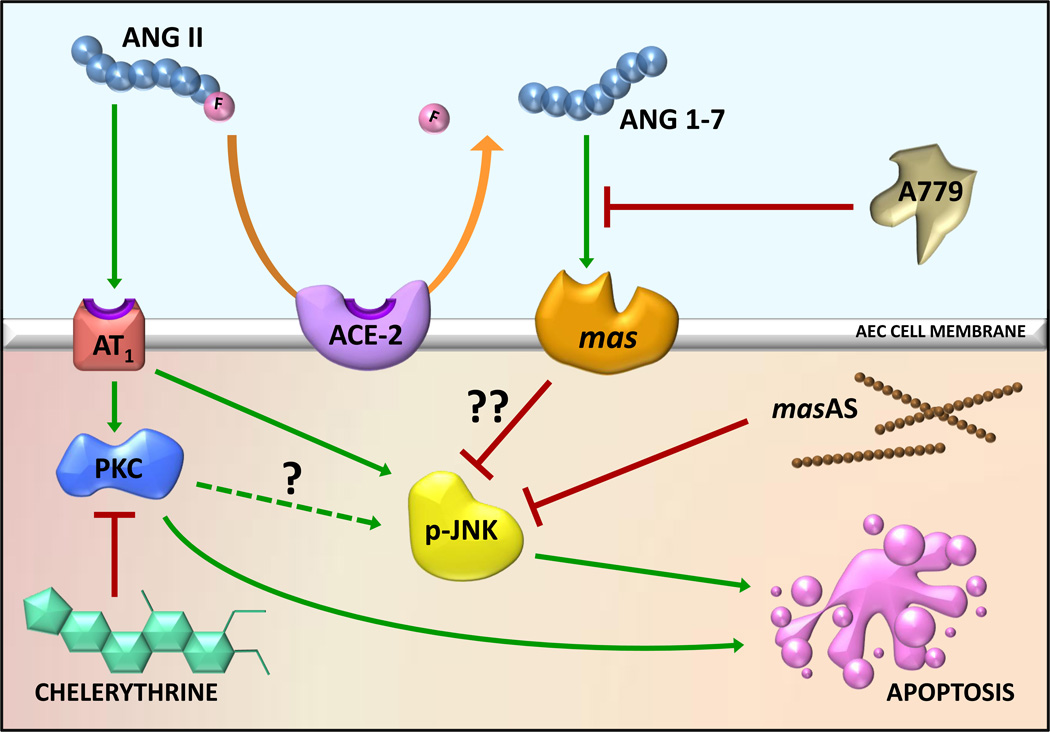Figure 2.
Known actions of angiotensin II on alveolar epithelial cell survival. The octapeptide angiotensin (ANG)II induces apoptosis of alveolar epithelial cells (AECs) through the AT1 receptor; the protein kinase C (PKC) inhibitor chelerythrine blocked AEC apoptosis in response to ANGII. Moreover, the phosphorylation of JUN N-terminal Kinase (p-JNK) is a required event in AEC apoptosis in response to ANGII or bleomycin. Angiotensin converting enzyme-2 (ACE-2) acts as a survival factor by a) degrading the proapoptotic ANGII and b) producing the heptapeptide angiotensin1-7 (ANG1-7), which inhibits apoptosis by blocking JNK phosphorylation through the ANG1-7 receptor mas. Both JNK phosphorylation and apoptosis of AECs can be blocked by either the specific mas receptor antagonist A779 (D-Ala7-Ang1–7) or by antisense oligonucleotides against mas mRNA (masAS). The steps, if any, between PKC and p-JNK (?) are currently unknown. Similarly, the mechanism(s) by which mas activation inhibits JNK phosphorylation (??) in AECs are unknown but are currently being investigated. The intra-versus extracellular locations of each of the events described are currently unknown, but were depicted as shown on the basis of available data; whether ANGII accumulation, degradation to ANG1-7 and/or binding to AT1 or mas can occur intracellularly is presently unknown. See text for more detail.

